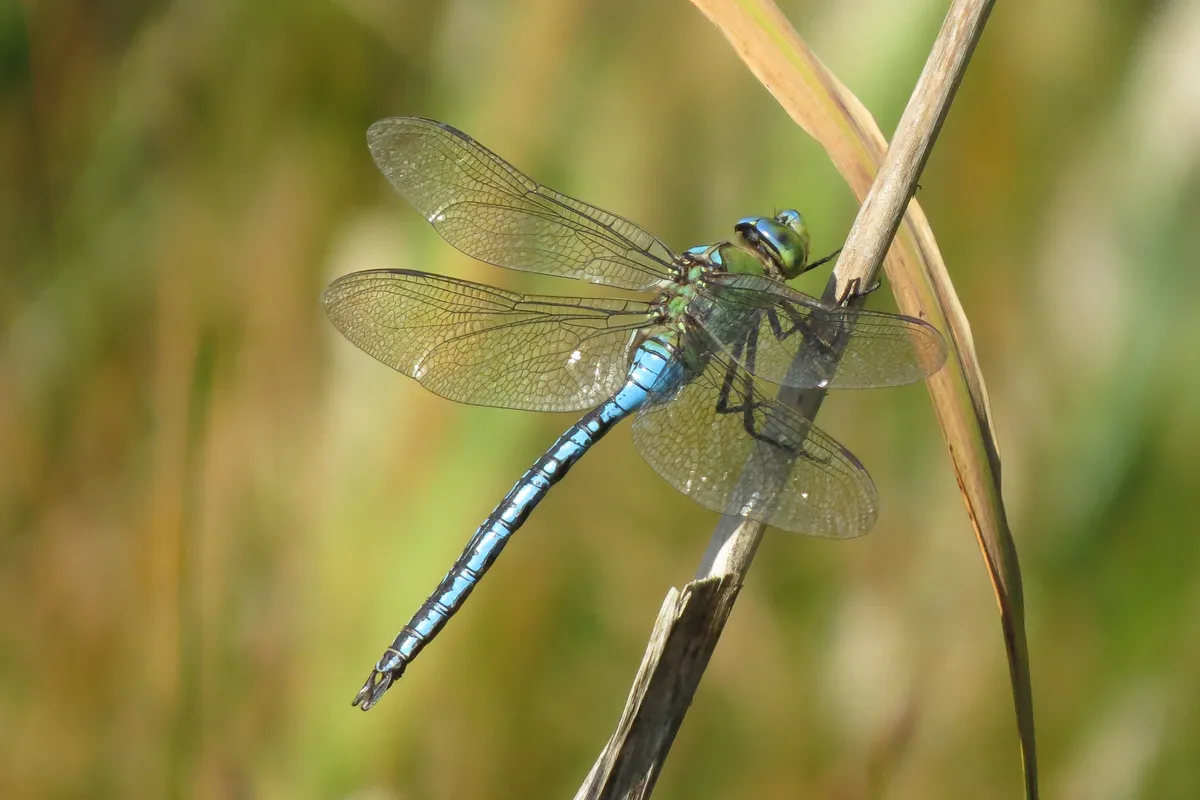We first encounter metamorphosis through children’s books such as The Very Hungry Caterpillar, in which (spoiler alert!) the insatiable insect ends up turning into a beautiful butterfly.
This process – a spectacular transformation in an animal’s form or ‘morphology’ – produces dramatic differences between larvae and adults.
What animals go through metamorphosis?
Metamorphosis is characteristic of insects and amphibians, but it’s also found in specific groups. Flatfish are a clear case among vertebrates: a fish starts with two sides to its body – bilateral symmetry – but the right eye migrates to the left side and its dorsal fin becomes shorter as it transitions from a free-swimming larva to a ‘benthic’ or bottom-dwelling adult on the seafloor or river bed.
- Amphibian vs reptile: what's the difference?
- The weirdest eyes in the animal kingdom: From creepy to cute, here are the eyes that take ordinary to extraordinary
Similar phenomena occur in invertebrates. For example, adult echinoderms have a benthic lifestyle and radial symmetry – as seen in five-armed starfish – but their larvae are bilaterally symmetrical, free-swimming plankton.
Do insects go through metamorphosis?

Insects have an exoskeleton, which constrains size and shape, and must shed their rigid, outermost layer (moulting) and form a new one to grow. Primitive groups such as silverfish are ‘ametabolous’, meaning they don’t transform and hatchlings are small versions of the wingless adults. More advanced insect groups, such as crickets and dragonflies, are ‘hemimetabolous’, meaning they undergo partial metamorphosis – the adults mature from juvenile nymphs that lack parts such as wings and genitals.
- How did insects' larval stage evolve, and what's the difference between a grub, a caterpillar and a nymph?
- How does a caterpillar turn into a butterfly? A guide to nature’s greatest transformation
- Grasshoppers vs crickets: what's the difference between these two jumping insects?
Most (nearly 85 per cent) of insect species, including beetles and flies, are ‘holometabolous’, which means complete metamorphosis: a newly hatched larva is obviously distinct from the adult form and there’s an inactive transition stage, the pupa. Butterflies, for instance, emerge from a chrysalis after living as caterpillars with elongated bodies, ‘prolegs’ on the abdomen and large mandibles for chewing.
What about amphibians?

Like all amphibians, frogs are semiaquatic creatures that use their moist skin as a respiratory organ. But while tadpoles have gills too, adults develop lungs. Over a few weeks, the larva’s body also absorbs structures such as the tail before growing muscular back legs for jumping and a huge mouth to engulf prey. The gut, which is initially long to digest plant matter, gets shorter during metamorphosis.
- How to rear froglets from frogspawn
- The weirdest and strangest frogs you (probably) never heard of - or imagined existed, from ultrasonic screamers, and the hairy to a frog that can fly...
Changes to breathing and locomotion are also seen in salamanders. Many of these amphibians are lizard-shaped as adults, but as larvae they have a flattened tail (a rudder and keel in water) that’s lost once juveniles shift to life on land. One unusual species is the axolotl, which is ‘paedomorphic’ – it becomes sexually mature but retains larval traits such as feathery gills.
How does metamorphosis work?
Remodelling of a body results from cells dying, dividing or differentiating to become other types. Cells do that in response to the rise or fall in levels of certain hormones. In insects, where metamorphosis requires moulting or ‘ecdysis’, ecdysteroids are crucial to the process, while vertebrate transitions are often controlled by thyroid hormones.
Note that while the most apparent changes are external, metamorphosis alters an animal’s internal physiology, too. The process is technically defined as the transitions that occur after an embryo has finished developing (following birth or hatching) so it excludes the development of reproductive organs during puberty.
Why is metamorphosis important?
Metamorphosis allows animals at different stages to occupy separate ecological niches, which reduces competition for resources as larvae and adults often have distinct diets. Tadpoles are herbivores while frogs are carnivores, for example.
With millions of species, insects are more diverse than all the other groups of visible organisms combined. That success owes thanks to the evolution of powered flight, which enabled animals to find food, escape predators and move to favourable climates. Flight probably put insects on a path to metamorphosis, as adult forms are dedicated to dispersal and mating, whereas juveniles must first prepare for that phase by gorging themselves… which explains how a caterpillar can be so very hungry.
More questions answered:
